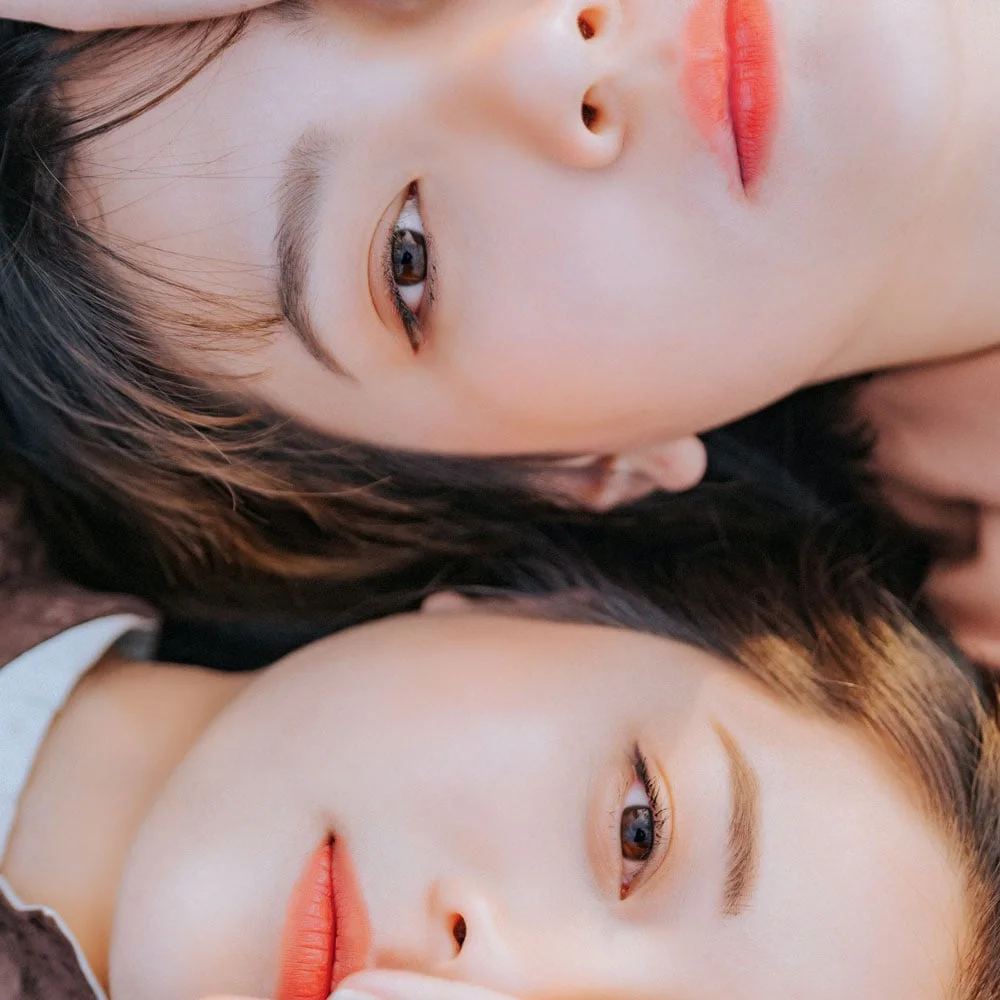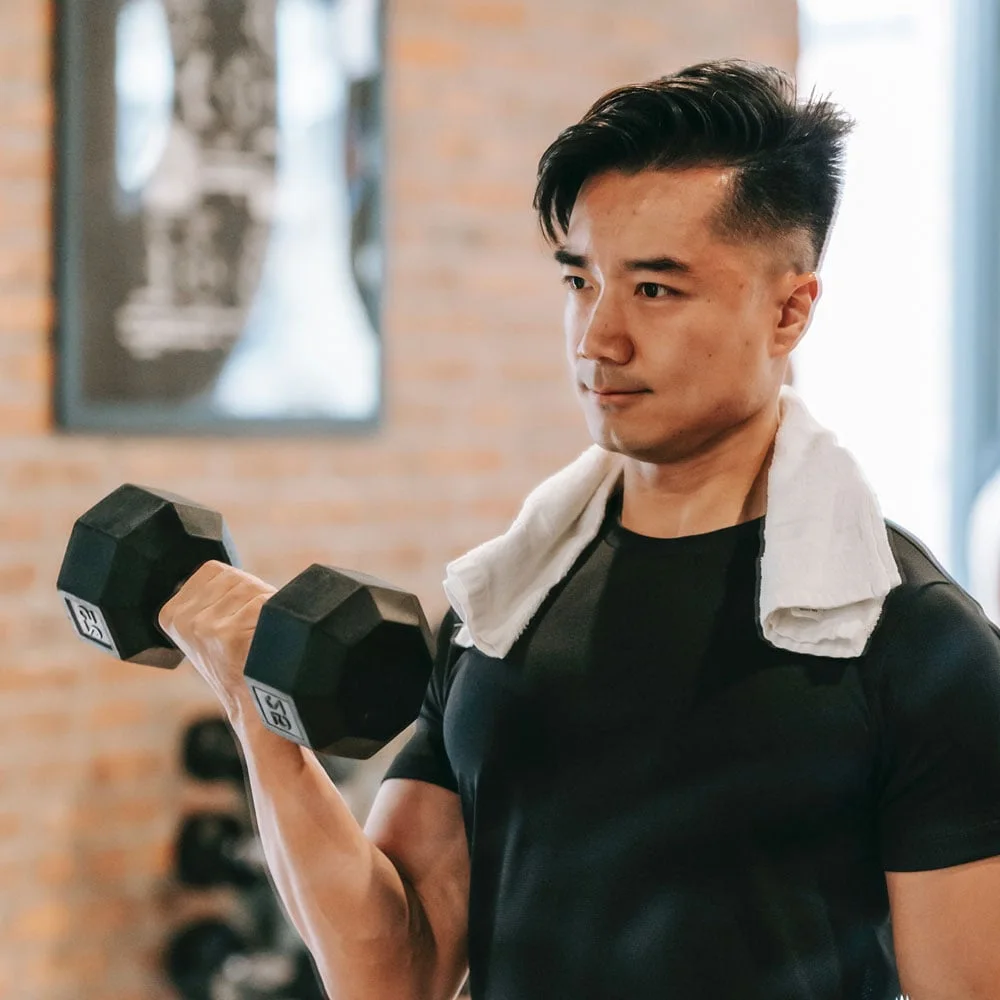Here's what we'll cover
Here's what we'll cover
Pomade and other styling products are great for maintaining your hairstyle, but they can come with the downside of clogging pores and causing breakouts. It can be frustrating to deal with, but fortunately, there are ways to prevent and treat pomade acne.
What causes pomade acne?
Hairstyling products like pomade are often waxy––which makes them so effective at holding hairs in place. However, these waxes can build up on the skin and clog pores, which can lead to pomade acne, showing up along your hairline, forehead, or upper back.
A little background: acne is an inflammatory skin condition caused by pores becoming blocked by dead skin cells and natural oils our skin produces (sebum). Sebum and dead skin cells are a normal part of healthy skin, but when they accumulate, they can cause acne (Sutaria, 2022).

Oils from cosmetics and hair products can also trigger acne. When products like pomade are used often, they can accumulate on the skin and block your pores, causing acne. Pomade acne may appear as a full breakout or a few individual back and forehead pimples (Sutaria, 2022; Yousef, 2021).
Types of acne
Acne isn’t just an issue that teenagers face—adults experience it too. You can get acne for the first time as an adult (after age 20–25), a condition referred to as “adult-onset acne.” In general, women tend to get adult acne more often than men. Up to 22% of women in the United States have adult acne, while only 4–6% of men do (Tanghetti, 2014).
Here are a few basic types of pimples (also called comedones) associated with acne (Sutaria, 2022):
Blackheads are pimples open to the air, which causes them to oxidize and turn black.
Whiteheads remain under the skin, can be painful, and come with some inflammation.
Papules and pustules—Papules are also under the skin but are noticeably red and inflamed. These escalate to pustules if you see pus gathering at the surface.
Cysts or nodules—If you have cystic acne, pimples are infected and characterized by deep inflammation and pus. These can be quite painful.
Acne can also pop up due to hormones, skin yeast (fungal acne), and health conditions like polycystic ovary syndrome (PCOS).
How to get rid of pomade acne
Fortunately, there tends to be a clear cause for pomade acne—so getting rid of it can be pretty straightforward. Here are a few basic steps:
Apply hair products sparingly. Refraining from using too much product helps avoid transferring excess product to your skin.
Wash hair and skin thoroughly in the shower. You want to ensure all haircare or styling products are fully cleansed from your skin. Making sure to wash off any residue will help reduce pomade acne. Try using a gentle skin cleanser with a soft washcloth to thoroughly wash your face and upper back.
Always shower after working out. Sweating during a workout can cause hair products to run down your face, neck, and back. Hopping in the shower after exercising will remove any residue before it has a chance to clog pores and trap bacteria.
Use products with non-comedogenic oils. If you see cosmetics and hair products advertising non-comedogenic oils, it means they contain oils that won’t clog pores. You can also look for oil-free labels or try switching to water-based pomade, which has fewer pore-clogging ingredients.
Clean hats and pillowcases often. Anything that touches your hair and face could be responsible for transferring products onto your skin, contributing to acne. Washing pomade or other products out of your hair at night also prevents transfer onto pillows (and subsequently your face) while sleeping.
Maintain a good skincare routine. There are skincare routines for all skin types, but basic steps include cleansing, moisturizing, and protecting skin from the sun. For people looking to treat pomade acne, cleansing is an important step; wash your face well every evening with an appropriate cleanser to prevent pomade acne.
If you stop using hair products or follow the steps above and still experience forehead acne, it’s a good idea to talk to a healthcare professional. It may be that your acne has a different cause than pomade or other hair products.
Other acne treatments
If the steps above aren’t effective, there are many other types of acne treatments you can try.
Products designed to fight acne that are available over-the-counter or through a prescription include (Zaenglein, 2016):
Benzoyl peroxide—This topical over-the-counter antiseptic attacks bacteria on the skin that causes acne.
Salicylic acid—Products containing salicylic acid are popular for drying out pimples and unclogging pores
Retinoids—Topical retinoids like tretinoin are prescription drugs that increase skin cell turnover and reduce inflammation.
Topical antibiotics—These prescription creams usually combine an antibiotic (like clindamycin or erythromycin) with benzoyl peroxide to help fight bacteria and decrease inflammation.
Tretinoin Important Safety Information: Read more about serious warnings and safety info.
Oral acne treatments
Oral treatments are available with a prescription and help treat moderate to severe acne that does not respond to topical medications. They can have more significant side effects than topical creams. If your forehead acne is persistent and doesn’t go away after you’ve stopped using hair products, it may be that your acne has a different cause than pomade and other hair products. If so, your dermatologist can help you investigate further.
Oral treatments include (Pile, 2021; Zaenglein, 2016):
Isotretinoin—This is a common oral retinoid medication (better known by its brand name, Accutane) reserved for severe acne. In addition to other side effects, it causes harm to a fetus, so women of childbearing age must be on birth control while taking it.
Antibiotics—Prescription antibiotics like doxycycline and erythromycin can decrease skin bacteria and inflammation of pimples.
Birth control pills—Believe it or not, birth control pills can also be helpful for acne. Contraceptives can balance hormone levels in women, helping decrease pimples.
DISCLAIMER
If you have any medical questions or concerns, please talk to your healthcare provider. The articles on Health Guide are underpinned by peer-reviewed research and information drawn from medical societies and governmental agencies. However, they are not a substitute for professional medical advice, diagnosis, or treatment.
Pile, H. D. & Sadiq, N. M. (2021). Isotretinoin. StatPearls . Retrieved on June 8, 2022 from https://www.ncbi.nlm.nih.gov/books/NBK525949/
Sutaria, A. H., Masood, S., & Schlessinger, J. (2022). Acne vulgaris. StatPearls . Retrieved on June 8, 2022 from https://www.ncbi.nlm.nih.gov/books/NBK459173/
Tanghetti, E. A., Kawata, A. K., Daniels, S. R., et. al. (2014). Understanding the burden of adult female acne. The Journal of Clinical and Aesthetic Dermatology , 7 (2), 22–30. Retrieved from https://www.ncbi.nlm.nih.gov/pmc/articles/PMC3935648/
Yousef, H, Alhajj, M, & Sharma, S. (2021). Anatomy, skin (integument), epidermis. StatPearls. Retrieved on June 8, 2022 from https://www.ncbi.nlm.nih.gov/books/NBK470464/
Zaenglein, A., Pathy, A., Schlosser, B., et al. (2016). Guidelines of care for the management of acne vulgaris. Journal Of The American Academy Of Dermatology , 74 (5), 945-973.e33. doi: 10.1016/j.jaad.2015.12.037. Retrieved from https://pubmed.ncbi.nlm.nih.gov/26897386/










